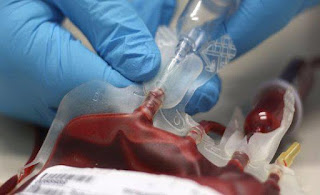Interventional Pulmonology: A Minimally Invasive Approach to Respiratory Disease
Interventional pulmonology (IP) is a relatively new field of medicine that specializes in the diagnosis and treatment of lung diseases using minimally invasive techniques. IP procedures are performed using flexible bronchoscopes, which are inserted through the mouth or nose and guided to the lungs to access the airways and surrounding structures. The use of interventional pulmonology techniques has revolutionized the field of respiratory medicine, enabling earlier and more accurate diagnosis and treatment of lung diseases.
What is Interventional Pulmonology?
Interventional pulmonology is a subspecialty of pulmonology that focuses on the use of minimally invasive procedures to diagnose and treat lung diseases. The field encompasses a broad range of diagnostic and therapeutic techniques, including bronchoscopy, endobronchial ultrasound (EBUS), navigational bronchoscopy, bronchial thermoplasty, pleuroscopy, and thoracoscopy. These procedures are performed using specialized equipment and techniques to minimize patient discomfort, reduce the risk of complications, and provide better outcomes.
Diagnostic Techniques
Bronchoscopy is a minimally invasive technique used to visualize the inside of the airways and lungs. It involves inserting a thin, flexible bronchoscope through the mouth or nose and guiding it to the lungs. The bronchoscope is equipped with a light and a camera, allowing the physician to examine the airways and take tissue samples for biopsy. Bronchoscopy is commonly used to diagnose lung cancer, infections, and other respiratory diseases.
Endobronchial ultrasound (EBUS) is a specialized form of bronchoscopy that uses ultrasound to visualize the lungs and surrounding tissues. It is often used to diagnose lung cancer, lymphoma, and other tumors, as well as to stage lung cancer and evaluate lymph nodes for metastasis.
Navigational bronchoscopy is a technique used to access small or difficult-to-reach areas of the lungs. It involves using a special bronchoscope equipped with a GPS-like system to guide the physician to the target area. Navigational bronchoscopy is often used to biopsy lung nodules or lesions that are too small or too deep in the lungs to be accessed with conventional bronchoscopy.
To Know More Insightful Research, Click Here: https://www.coherentmarketinsights.com/market-insight/interventional-pulmonology-market-4768
Therapeutic Techniques
Bronchial thermoplasty is a minimally invasive treatment for severe asthma that uses heat to reduce the thickness of the smooth muscle in the airways. The procedure involves inserting a specialized catheter through the bronchoscope and delivering controlled thermal energy to the airway walls. This reduces the frequency and severity of asthma attacks and improves lung function.
Pleuroscopy and thoracoscopy are minimally invasive procedures used to diagnose and treat diseases of the pleura, the thin membrane that lines the outside of the lungs and the inside of the chest wall. The procedures involve inserting a thin, flexible scope through a small incision in the chest wall and visualizing the pleura. They are often used to diagnose and treat pleural effusions (excess fluid in the pleural space), pleural thickening, and pleural tumors.
Benefits of Interventional Pulmonology
Interventional pulmonology has several advantages over traditional surgical approaches to respiratory disease. Minimally invasive techniques are associated with lower rates of complications, reduced recovery times, and improved patient outcomes. They also allow physicians to diagnose and treat lung diseases at earlier stages, when they are more treatable and potentially curable.
In addition, interventional pulmonology techniques are often less expensive than traditional surgical approaches, and they can be performed on an outpatient basis, allowing patients to return home the same day as the procedure.




Comments
Post a Comment